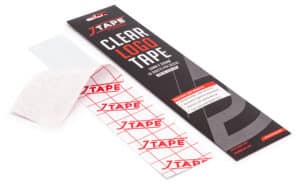How to Remove & Replace Car Emblems (Debadging & Rebadging): A Step-by-Step Guide
Customising and personalising by adding or taking away badges and emblems is a great way to create a unique appearance for your vehicle. It can even be necessary to remove badges when carrying out paint or bodywork repairs. But if you’re unfamiliar with how to debadge and rebadge properly, you could be left with unwanted surface damage on the vehicle or an unsightly emblem placement.
In this guide, we’ll be explaining all the steps to follow when removing and replacing any emblems, badges or decals.
How to Remove a Car Emblem
Removing car emblems safely and efficiently can be done in a few different ways. But it’s important to ensure that the surface doesn’t become damaged in the process. If the goal is rebadging, it’s also worth adding a piece of masking tape over the emblem and the surrounding areas as a guide to maintain the spacing and ensure none of the elements are lost.
Below, we’ll explain two of the most popular removal methods.
Floss method
The floss method might require more patience, but this is usually the safest way to handle emblem removal. First, steam the emblem by placing a jug of hot (not quite boiling) water near the area to begin loosening the adhesive. Once the water has cooled slightly, this can be slowly poured over the emblem since it should be able to penetrate the gap between the vehicle’s surface and the back of the badge.
The next step is to take a piece of floss, string or cheese wire in between the badge and the car’s surface and use a side-to-side motion to work your way through the adhesive and remove it. The process can also be sped up by dipping the floss or string in adhesive remover before attempting to loosen the badge.

Heat method
This method is typically less time-consuming, but it can also cause damage to the paintwork and deeper layers of the vehicle’s surface if proper care and precautions aren’t taken. However, it uses a similar approach to the above since heat will be applied to melt the existing glue.
Place the heat gun over the emblem on its lowest heat setting to start with. Once the emblem has been heated thoroughly, you can then take either a putty knife or floss to loosen it from the car’s surface. However, this can sometimes cause issues since the excess heat can lead to paint layers melting. Because of this, we recommend trying the floss method first.
What Can I Use to Remove Car Emblem Adhesive?
Car emblem glue must be removed properly to ensure the vehicle’s surface remains damage-free and is ready to be rebadged.
The best way to remove our JTAPE Clear Logo Tape is to apply heat before loosening it with cheese wire. The remaining adhesive can then be sanded off using a low-grit orbital sanding tool. This will ensure that you’re only removing the excess foam backing remaining on the vehicle’s surface and not causing unnecessary damage to the paintwork.
A cloth dipped in an adhesive removal solution can also be used to gently loosen any remaining adhesive. Simply apply this in circular motions using pressure.
How to Prepare a Car for Rebadging
The first step to take when preparing a car for rebadging is to use a panel wipe. Not only will this help remove any stubborn glue residue, but it’ll also ensure the area is clean and free from any dust, dirt or debris.
The emblem should be applied to a clean and clear surface, which is why this step is essential for the process. Without wiping down the surface, it’s possible that you could accidentally apply the emblem adhesive over dirt or debris, causing it to be trapped. While this might not seem like an issue, it can cause premature lifting of the adhesive and affect the overall appearance.
How to Rebadge a Car

Our JTAPE Clear Logo Tape simplifies the process of rebadging and mounting car emblems. Here, we’ll take you through the step-by-step process of using our innovative tape solution to achieve the perfect application.
- Step 1: Peel away the printed liner to expose the adhesive.
- Step 2: Apply the back of the badge to the adhesive side.
- Step 3: Turn it over and apply pressure to the printed liner side – the badge should be sandwiched between the two layers.
- Step 4: Peel away the printed layer and carefully remove the badge from the adhesive side, ensuring it stays attached to the guide tape.
- Step 5: Place the emblem on the surface of the car using the guide masking tape to help with achieving the correct placement.
- Step 6: Apply pressure to the badge to secure it in place before removing the guide tape.
Cleaning Car Emblems Effectively
Whether you’ve fixed new emblems or want to revive the original vehicle badges, understanding how to clean emblems can be important if you want to maintain their high-quality appearance for many years to come. Professionals and car owners alike should be aware of the best practices when it comes to cleaning and polishing these areas since they typically require different treatment than the rest of the bodywork or windows.
The first thing to think about is how long the adhesive has been left to set. We recommend allowing the glue to set for around 24 hours before cleaning it since the high tack formula requires extra time to fully bond the two surfaces together.
The second most important thing to consider is applying UV protection since the emblems will be exposed to UV when the vehicle is being driven around. Before applying this, a high quality wax and polish should be used over the badge to protect it from pitting or chipping.
Finally, it’s worth recommending that customers avoid pressure washing these areas since this can reduce the effectiveness of the adhesive. Instead, it’s best to handwash around badges and decals because this will increase their durability and longevity.
We hope this guide provides an excellent resource for removing and replacing car emblems effectively and efficiently. For more tips perfect for body shop professionals, check out our blog.


